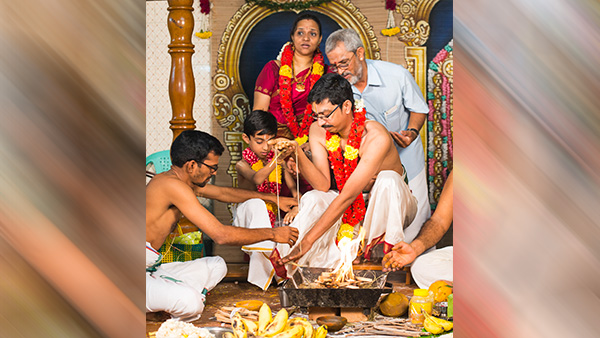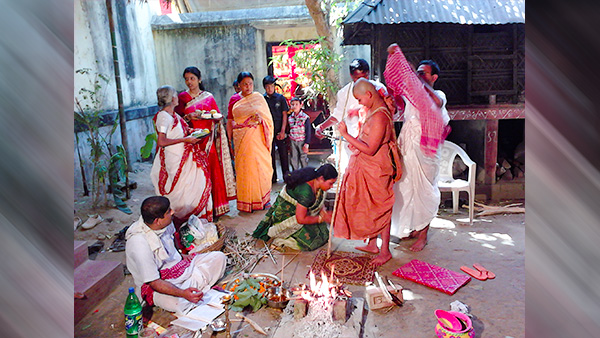Just In
- 11 min ago

- 29 min ago

- 2 hrs ago

- 3 hrs ago

Don't Miss
- Automobiles
 Mahindra XUV 3XO Mileage & Acceleration Figures Revealed – Marks Improvement Over XUV300
Mahindra XUV 3XO Mileage & Acceleration Figures Revealed – Marks Improvement Over XUV300 - News
 Karnataka Lok Sabha Elections 2024: A Closer Look At Key Constituencies In Phase 2
Karnataka Lok Sabha Elections 2024: A Closer Look At Key Constituencies In Phase 2 - Movies
 Veppam Kulir Mazhai OTT Release Date And Platform: When And Where To Watch Dhirav And Ismath Banu's Film
Veppam Kulir Mazhai OTT Release Date And Platform: When And Where To Watch Dhirav And Ismath Banu's Film - Sports
 IPL 2024: RCB to Play 250th IPL Match Today - Records by Seasons, Win Percentage, Latest Stats So Far
IPL 2024: RCB to Play 250th IPL Match Today - Records by Seasons, Win Percentage, Latest Stats So Far - Finance
 JPMorgan CEO Jamie Dimon Hails PM Modi's Economic Reforms, Urges US to Follow Suit; Details
JPMorgan CEO Jamie Dimon Hails PM Modi's Economic Reforms, Urges US to Follow Suit; Details - Education
 JEE Main Result 2024 Out, Telangana's 15 Toppers Shine, Check Statewise List of 56 Candidates with Perfect 100
JEE Main Result 2024 Out, Telangana's 15 Toppers Shine, Check Statewise List of 56 Candidates with Perfect 100 - Travel
 Escape to Kalimpong, Gangtok, and Darjeeling with IRCTC's Tour Package; Check Itinerary
Escape to Kalimpong, Gangtok, and Darjeeling with IRCTC's Tour Package; Check Itinerary - Technology
 OPPO Find X7 Ultra Camera Deep-Dive: Pushing the Boundaries of Photography on a Smartphone
OPPO Find X7 Ultra Camera Deep-Dive: Pushing the Boundaries of Photography on a Smartphone
Upakarma 2022: Date, Time, Rituals Associated With The Thread Changing Ceremony
To be eligible enough to read or study the ancient scriptures in the ancient days, one had to be a Brahmin (who belonged to the upper caste of the society in India). The Gayatri Mantra was taught to them through the sacred thread ceremony called the Upanayanam. The same process would be repeated every year with due observance of some rituals and this day was called Upakarma.

Upakarma is a Sanskrit word where Upa means "before" and Karma means an "action". Upakarma means the beginning or Aarambha of the study of Vedas and Upanishads. In the words of a layman, Upakarma is a thread (Yagnyopavita) changing ceremony that reorients us in the spiritual path. Scroll down the article to know more.
Upakarma 2022: Date And Time
Rig-Veda Upakarma falls on the Sravana Nakshatra during Shravana month. Purnima Tithi Begins on 11 August 2022 at 10:38 am. Purnima Tithi Ends on 12 August 2022 at 07:05 am.
By doing the Kamokarsheet Japa and Mahasankalpam, around 1008 times, we begin the Upakarma by observing repentance for all the sins committed in the past year. We take a panoramic view of the past, our deeds, and the steps taken to rectify past errors and based on this, set up fresh objectives for the new year. While Upaveetham reminds us of our Nitya karmas or the daily schedule of karmas Gayatri japa inspires us to dispense our duties in a perfect manner.

Upakarma 2022: History
Although women were also known to wear the Upaveetha, nowadays, it is only men who were initiated into Gayatri japa who wear it. In the ancient days, the Brahmins used to study the Vedas for only 6 months at a stretch in a year, from the month of Sravana to Pushya which also used to coincide with Chaturmasya, the period strictly meant for sacred austerities. So before they began studying Vedas, it was important to change the Upaveetham. Since the present generation, learns the Vedas at all times during the year, they observe the Upakarma ceremony once a year at this time.
Apart from this, Lord Hayagreeva is the deity who restored the Vedas from the clutches of the demons who had stolen them from Lord Brahma, many years back. To pay our respects to Lord Hayagreeva, the god of Vedas, we celebrate Upakarma, which is the day to begin reading the Vedas.
Upakarma 2022: What Is Upaveetham?
Yagnopaveetham or the Brahmasutram is a triple-stranded filament tied by a knot called Brahmagranthi and this is to be worn only by those initiated to Gayatri Japa. Yagna means sacrifice and Upaveetham means thread. Without the Yagnopaveetham, no sacred ritual can be performed. This 'thread of sacrifice' is symbolic of the sacrifice of ego, anger & selfishness.
The length of Yagnopaveetham should be exactly up to the naval level, neither below it nor above it. If worn below the navel, the power of penance is lost and if worn above, it leads to decline in longevity.
There are three positions with respect to the wearing of sacred thread. One is Savya position where the thread is worn over the left shoulder and under the right arm. This is done during auspicious functions. Apasavya position is when the thread is worn above the right shoulder and under the right arm. This is during the inauspicious times such as mourning. Wearing it like a garland around the neck and over the chest, it is called Nivita position, which is assumed during rishi tarpan, answering the call of nature, or while carrying a corpse etc. While wearing, Yagnopaveetham it should be held by both hands with the knot in the Yagnopaveetham being held above by the right hand facing upwards.
A Brahmachari (unmarried person) should wear one Yagnopaveetham with three strands. A Grihastha (married person) should wear two such Yagnopaveethas. The third Upaveetham is supposed to be the upper dhoti that the Brahmins wear. The fourth one is for donating to someone who does not possess a sacred thread.
Upakarma 2022: When Should One Not Change The Sacred Thread?
Sacred thread can be changed on other days as well on certain conditions. On the Sankramana day, on the eclipse days, on Adhika masa and during the birth of a child, when someone dies in the family, a new thread should be worn only after the stipulated time passes. Secondly, it should be changed, whenever one visits the cemetery or touches a corpse, when one touches a menstruating woman, or when one attends the death ceremony on the 10th day of someone's death. The thread should not be changed even after the eclipse is over. While changing the thread, one should face the east or north.

Upakarma 2022: Rituals To Follow While Changing The Thread
Old Yagnopaveetham should be dropped into water or on a Tree and never into the garbage bin. Perform Gayatri japa as per your capacity on this day. One can also do the japa on the next day of Upakarma. The sacred thread should not be directly purchased from a shop without performing puja to the new one. Those who can, on the day of Upakarma, can do the tarpan procedure to departed ancestors and for the Rishis. It is customary to offer the sacred thread and Gopi Chandan along with Dakshina to at least two Brahmins.
The direction for changing Yagnopaveetham should be facing East/North. If you are unable to do the Upakarma on the temple premises, you can change it in the comfort of your own house by following the below ritualistic steps.
Yagnopaveetha Dhaarana Vidhi) includes-
1.
Guru
Vandanam
(Invoking
Gurus)
2.
Vighneshwara
Prarthana
3.
Aachamanam
with
Chaturvimshati
(24)
Kesava
Namas
4.
Praanayaamam
5.
Sankalpam
(Recitation
of
Sankalpa
manthra)
6.
Yagnopaveetha
Samskaram
7.
Praana
Pratishta
8.
Invoking
Trinal
Lords
(Brahma,
Vishnu
&
Shiva)
9.
Invoking
Presiding
Deities
of
Yagnopaveetham
10.
Invoking
three
Vedas
(Rug,
Yajur
and
Saama)
11.
Invoking
Goddess
Gayatri
and
Surya
12.
Yagnopaveetha
Dhaarana
as
mentioned
above
13.
Removal
of
old
Yagnopaveetham
14.
Aachamanam
15.
Samarpanam
-
Sri
Krishnaarpanamasthu
Disclaimer: The information is based on assumptions and information available on the internet and the accuracy or reliability is not guaranteed. Boldsky does not confirm any inputs or information related to the article and our only purpose is to deliver information. Kindly consult the concerned expert before practising or implementing any information and assumption.
Image sources: Wikimedia Commons
-
 yoga spiritualityThrissur Pooram 2024: Date, Time, History, Significance, And Celebrations Related To Kerala's Rich Traditions
yoga spiritualityThrissur Pooram 2024: Date, Time, History, Significance, And Celebrations Related To Kerala's Rich Traditions -
 yoga spiritualityKamada Ekadashi 2024 Wishes: Greetings, Messages, Texts, Images, Twitter Status And Instagram Captions
yoga spiritualityKamada Ekadashi 2024 Wishes: Greetings, Messages, Texts, Images, Twitter Status And Instagram Captions -
 yoga spiritualityChaitra Navratri 2024 Day 9: Maa Siddhidatri Puja Vidhi, Vrat Katha, Mantra, And Aarti Lyrics
yoga spiritualityChaitra Navratri 2024 Day 9: Maa Siddhidatri Puja Vidhi, Vrat Katha, Mantra, And Aarti Lyrics -
 yoga spiritualityKamada Ekadashi 2024 Mantras To Chant On This Auspicious Day To Fulfill Desires
yoga spiritualityKamada Ekadashi 2024 Mantras To Chant On This Auspicious Day To Fulfill Desires -
 yoga spiritualityChaitra Navratri 2024 Day 8: Maa Mahagauri Puja Vidhi, Vrat Katha, Mantra, And Aarti Lyrics
yoga spiritualityChaitra Navratri 2024 Day 8: Maa Mahagauri Puja Vidhi, Vrat Katha, Mantra, And Aarti Lyrics -
 yoga spiritualityChaitra Durga Ashtami 2024 Wishes, Greetings, Messages, Images, Posters, Twitter, And Instagram Status
yoga spiritualityChaitra Durga Ashtami 2024 Wishes, Greetings, Messages, Images, Posters, Twitter, And Instagram Status -
 astrologyRam Navami 2024: Lucky Zodiac Signs Who Will Get Special Blessings Of Lord Rama And Will Be More Fortunate
astrologyRam Navami 2024: Lucky Zodiac Signs Who Will Get Special Blessings Of Lord Rama And Will Be More Fortunate -
 yoga spiritualityWhen Is Kamada Ekadashi 2024? Confirmed Date, Puja Rituals, Why Fasting Is Significant On This Day
yoga spiritualityWhen Is Kamada Ekadashi 2024? Confirmed Date, Puja Rituals, Why Fasting Is Significant On This Day -
 yoga spiritualityChaitra Navratri 2024 Day 7: Maa Kalratri Puja Vidhi, Vrat Katha, Mantra and Aarti Lyrics
yoga spiritualityChaitra Navratri 2024 Day 7: Maa Kalratri Puja Vidhi, Vrat Katha, Mantra and Aarti Lyrics -
 yoga spiritualityChaitra Navratri 2024 Day 6: Maa Katyayani Puja Vidhi, Vrat Katha, Mantra and Aarti Lyrics
yoga spiritualityChaitra Navratri 2024 Day 6: Maa Katyayani Puja Vidhi, Vrat Katha, Mantra and Aarti Lyrics -
 yoga spiritualityChaiti Chhath Puja 2024 Wishes, Greetings, Texts, Messages, Images, WhatsApp, Twitter And Instagram Status
yoga spiritualityChaiti Chhath Puja 2024 Wishes, Greetings, Texts, Messages, Images, WhatsApp, Twitter And Instagram Status -
 yoga spiritualityChaitra Navratri 2024 Day 5: Maa Skandmata Puja Vidhi, Katha, Mantra And Aarti
yoga spiritualityChaitra Navratri 2024 Day 5: Maa Skandmata Puja Vidhi, Katha, Mantra And Aarti


 Click it and Unblock the Notifications
Click it and Unblock the Notifications



